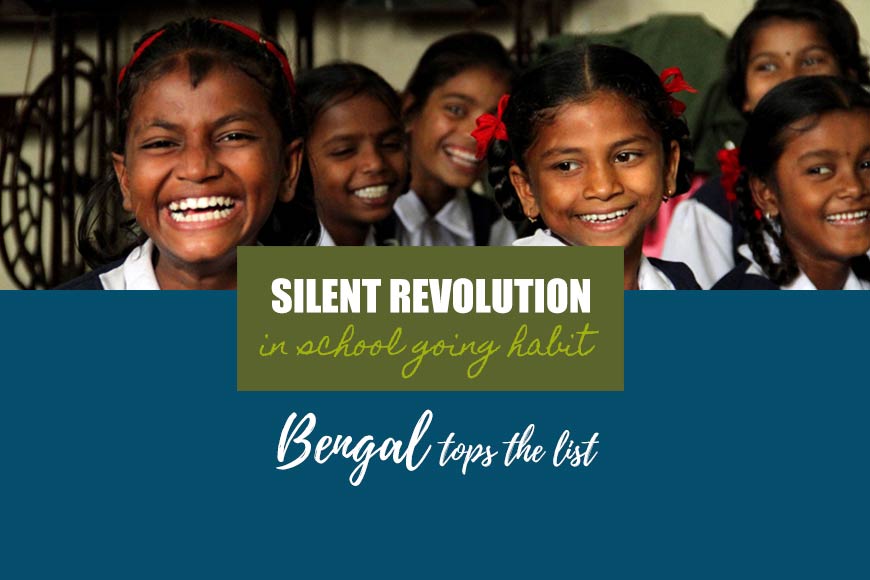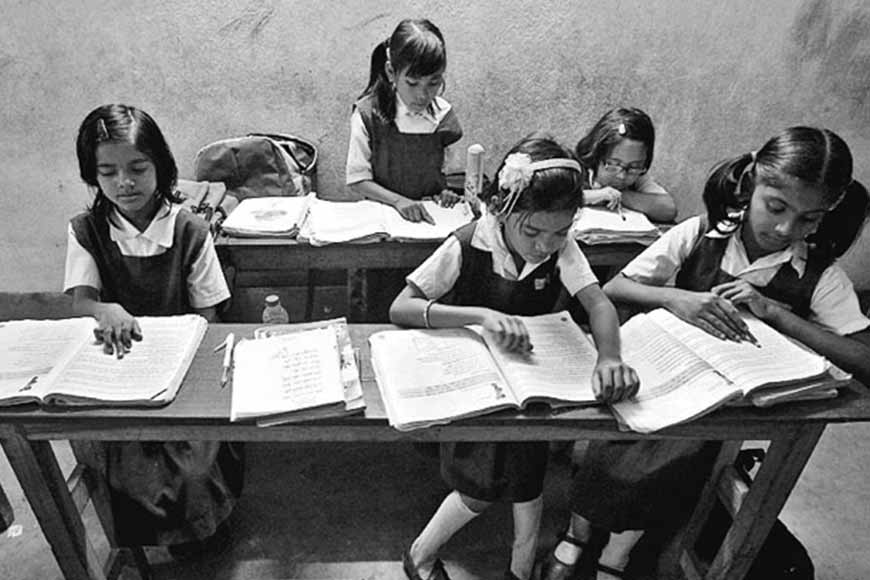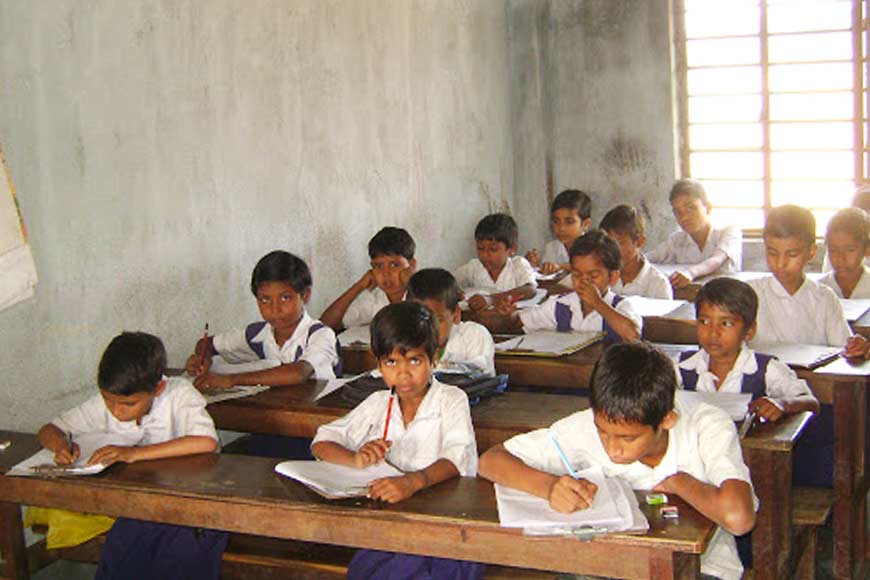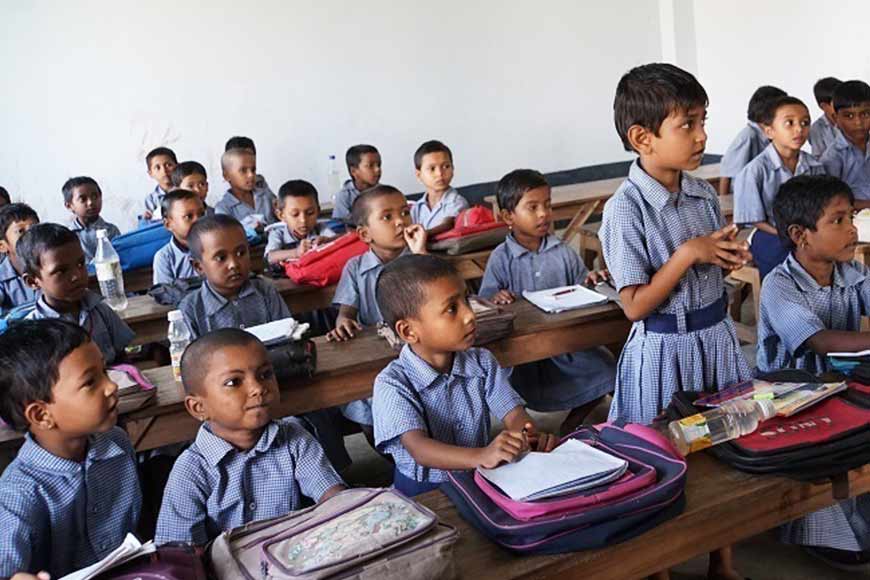Silent Revolution in Primary Education

Negative school dropout in primary level… highest percentage of school going children in government schools among all states in India, 90 percent of state’s schools are government or government sponsored schools and not private institutions…
Well the above figures are not of the most educated state of India, Kerala, but of West Bengal, a state that over last few years is bringing in a silent revolution in primary as well as secondary and higher secondary education through various schemes to attract students to schools. Even Kerala doesn’t have such a track record where more than 90 percent of the state’s schools are government schools only unlike Kerala where several missionary run schools in semi urban and rural areas make up the secondary school system.

Even during COVID-19 pandemic when schools are closed in the state, the mid-day meal rations were distributed to each child once a month. Some government schools are also encouraging students to grow their own organic vegetables in their own school premises.
What really worked in favour of West Bengal, to bring in such encouraging data? The well-thought of schemes that were innovative and encouraging for students and their parents who now wish to send children to schools rather than keep them back home. A big issue in rural and semi urban schools of West Bengal were toilets and meals. The state government has ensured that 100 percent government schools have atleast one toilet, if not more. Along with that, regular mid-day meals that are nutritious and contain protein laden food which many rural children do not get at home. Even during COVID-19 pandemic when schools are closed in the state, the mid-day meal rations were distributed to each child once a month. Some government schools are also encouraging students to grow their own organic vegetables in their own school premises.
As a result, more food items can be added to their daily plates as well as give them a lesson in community farming that will help these rural children to learn scientific farming techniques for the future. The State Education Department has also introduced an innovative method to track students who miss classes. In every booth in every part of West Bengal there is a Child Register. Every November this register is checked to find out which child is regularly missing classes. The school authorities and the teachers then go to their houses to convince parents to send the children to school. This practice ensures zero drop out and has been a very successful model. This model has yielded very good results with negative drop-out rate at the primary school level and lateral increase in number of students in classes. For example, there are many students who in the pre-primary levels were studying in private schools, but from class II onwards, they enroll in government schools. As a result, the number of students in that class increases, rather than decreasing. As per official data even in higher secondary sections, school drop-outs have drastically come down, as high as 50 per cent less, thanks to the encouraging projects taken up by the state government.
Along with the above, many schemes which were primarily brainchild of Honb’le Chief Minister Mamata Banerjee, like Sabuj Sathi, helped students, primarily girls to reach schools cycling even in remote rural areas. In secondary and higher secondary sections, additional text materials are supplied, along with the existing books. These support materials particularly in English like the book ‘Fragrance’ encourage parents to understand their wards are also getting proper English education as one gets in private schools. Computers in 90 percent government schools are also a big draw. This year there is an attempt to computerize 100 percent schools in West Bengal.

Every year on 2nd January, West Bengal celebrates Book Day. On this day, all children across all classes of state government schools get books. Along with that they are also given school bags, shoes, uniform and even copies to write. This is a big encouragement for all students and they look forward to joining schools in the beginning of every year.

Keeping in mind environmental and job issues, students of secondary and higher secondary levels are encouraged to practice rainwater harvesting and organic cultivation within the school premises or even in their villages. Skill development through schemes like Utkarsh Bangla helps the older students to learn skills that will help them in future to get jobs. No wonder such initiatives have stirred a flame of education in West Bengal churning out the best of students every year and increasing the number of educated youths year after year.











